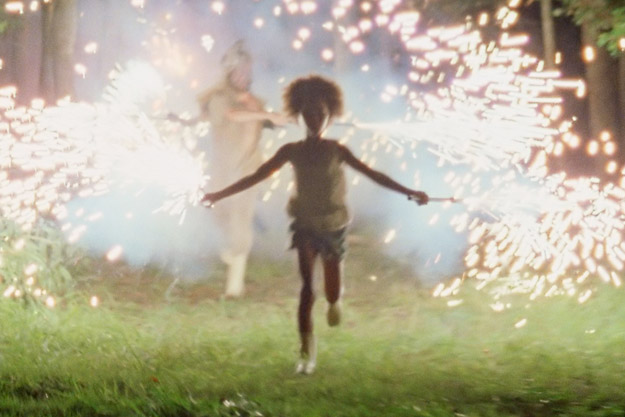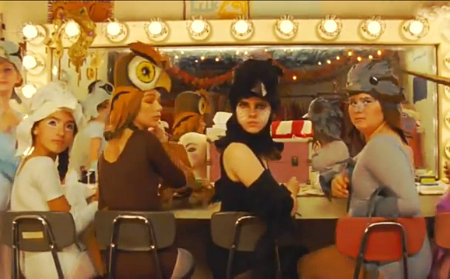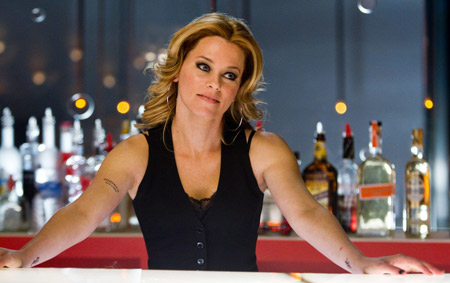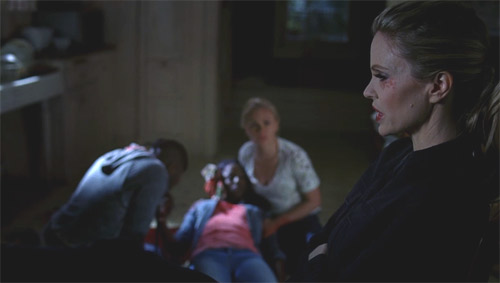12 Word Reviews: "Brave", "Beasts of Southern Wild", "Moonrise Kingdom"
 Saturday, June 30, 2012 at 2:12PM
Saturday, June 30, 2012 at 2:12PM My 1000+ word review of Magic Mike will be up tomorrow but in the meantime, let's clear the cache with a few words, a dozen in point of fact, on movies I didn't review properly.

Beasts of the Southern Wild (Benh Zeitlin)
A six year old girl learns survival lessons from her father in a drowned world. But synopsis won't due its real poetry any justice. See it!
10WR: Overwhelming sense of loss tempered by vivid originality, guileless acting, flexible allegory. A-
Oscar? I doubted it at an Oscar contender at first (defiantly weird and filled with first timers) but it has tremendous critical approval, and there's nothing else even remotely like it on the filmscape. It's very difficult to shake once you've experienced it. Could factor in across the board or, more likely, fight for a few key nods. Adapted Screenplay might be the safest bet (so far).
Brave (Mark Andrews, Brenda Chapman, and Steve Purcell)
A Scottish princess seeks to transform her fate but the magic she calls on has dangerous repercussions.
10WR: Refreshing steps outside Pixar comfort zones but oddly disjointed. Still... that hair! B
Oscar? A good bet in the Animated Feature category (Pixar has only missed that nomination once -- just last year with Cars 2) but anything beyond that and the music categories will be a tough sell.
 What kind of bird are you?
What kind of bird are you?
Moonrise Kingdom (Wes Anderson)
Troubled pen pals run away from home (and scout camp) in this darkly sweet tale of adolescent (and adult) loneliness.
10WR: Amusing affectations are balm and escape from real pain.Anderson's second best! B+
Oscar? That brilliant last movement in the end credits, with the narration of Desplat's music could go a long way for selling Best Original Score. But how about Screenplay and Art Direction? Too affected or just right?
People Like Us (Alex Kurtzman)
A young man (Chris Pine) discovers a half sister (Elizabeth Banks) he didn't know existed but keeps the truth from her and his angry recently widowed mother (Michelle Pfeiffer.
10WR: Strong actresses but uncomfortably incestuous plot bizarrely filmed like an action flick. C-
Oscar? If it's an unlikely hit, Pfeiffer could win traction in Supporting Actress.

Peace , Love & Misunderstanding (Bruce Beresford)
An uptight depressed lawyer visits her estranged hippie mother and their cultures clash... again.
10WR: Kindhearted with enjoyable if obvious performances. Too programmatic when complexity is needed. C
Oscar? No. Though it sure is nice to see Jane Fonda back onscreen.
Prometheus (Ridley Scott)
A team of scientists seeks our genetic ancestors on a far away planet and discovers the diabolical origins of those pesky acid-blooded creepy crawlies instead.
10WR: Tremendously visual. Intermittently heart-stopping -- that abortion sequence!. Plot is a tough sell. B
Oscar? We discussed this!
YOUR TURN in the comments






